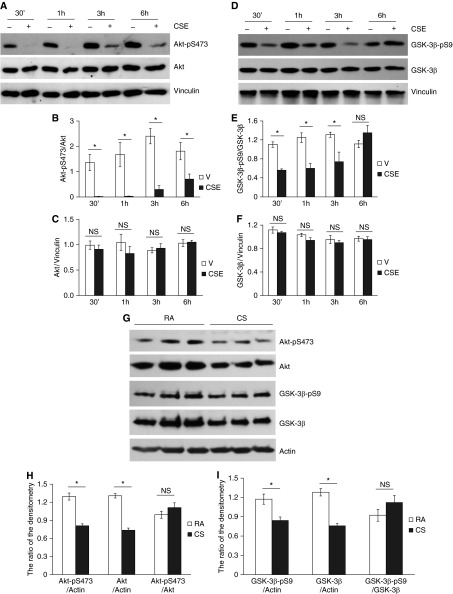Figure 5.
CSE inactivated Akt and activated glycogen synthase kinase (GSK)-3β in vitro and in vivo. Bovine PAECs were treated with vehicle (V; 10% PBS) or 10% CSE for the indicated times (A–F); 6- to 8-week-old male C57BL/6 mice were exposed to RA or CS for 6 hours, as described in Materials and Methods (G–I). Akt/GSK-3β total protein levels and Akt phosphorylation at Ser-473 and GSK-3β phosphorylation at Ser-9 in cell lysates and lung homogenates were assessed. Vinculin and actin were used for protein loading controls. Three independent experiments. Densitometry was performed on immunoblots of A, D, and G. The data are presented as the mean ± SE of the ratios of the densitometry of: phospho-Akt (Ser-473) to total Akt; phospho–GSK-3β (Ser-9) to total GSK-3β; total Akt to vinculin or actin; total GSK-3β to vinculin or actin; phospho-Akt (Ser-473) to actin; and phospho–GSK-3β (Ser-9) to actin; n = 3 for all panels. ANOVA and Tukey-Kramer post hoc test was used to determine statistically significant difference across means among groups. *P < 0.05 versus respective V (B and E) or RA (H and I).

